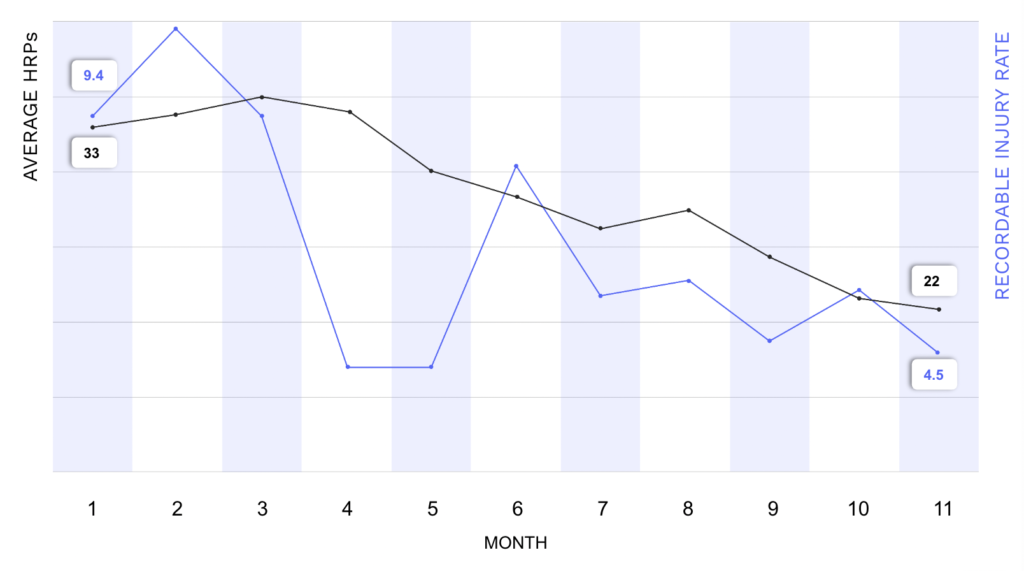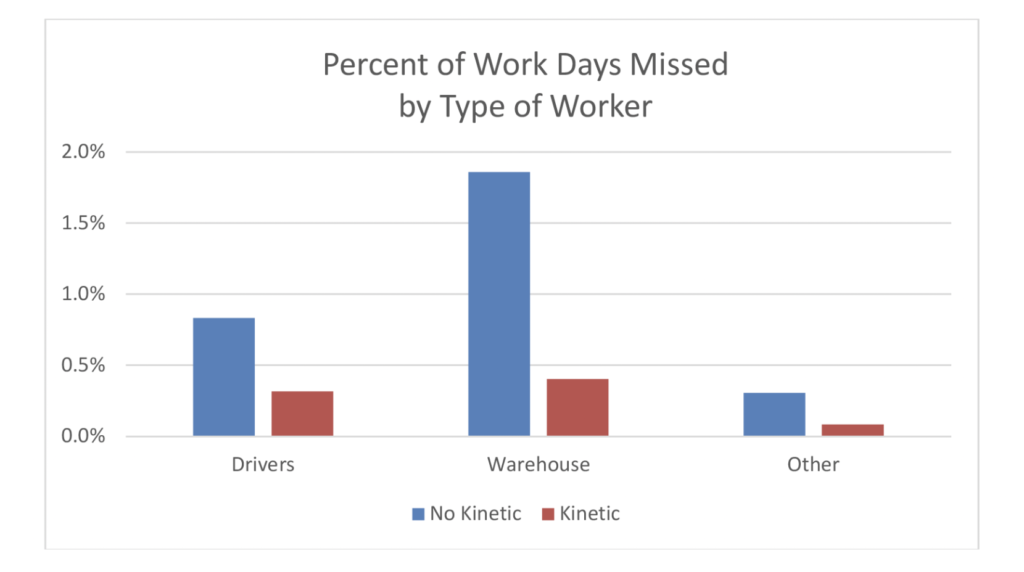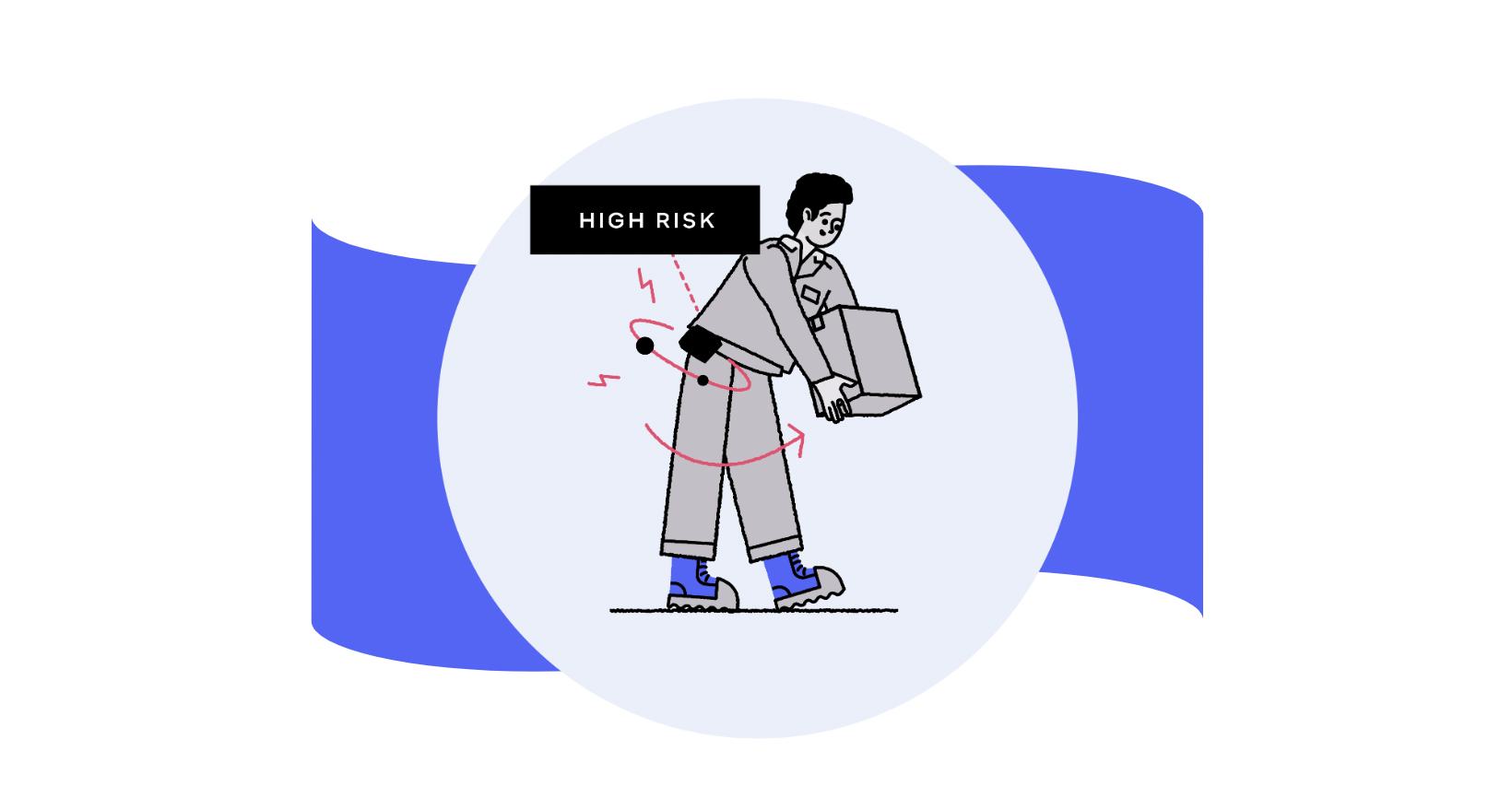In Part 1 of Wearables in Workers’ Comp we looked at how insureds can leverage wearable tech to detect and reduce high risk movements performed on the job, in order to prevent musculoskeletal injuries and workers’ comp claims. In this installment, we’re exploring how this innovative safety solution works to create lasting improvements to ergonomics and workplace safety.
The Problem
Musculoskeletal Disorders (MSDs), or sprain and strain injuries, are some of the most common and costly workers’ comp claims. For example, in 2020, 49% of all indemnity and lost time claims for auto dealerships in National Council on Compensation Insurance (NCCI) states were sprains and strains.
Unlike other workplace accidents, sprains and strains are often a result of cumulative trauma. Months and years of bad ergonomic habits mean that MSDs will have a constant presence in loss-runs, and a negative impact on the cost of workers’ comp premiums.
One solution to MSDs has emerged in the form of wearable safety devices. This technology proactively coaches employees on proper body mechanics, reducing the likelihood and severity of these costly claims. Now, wearables are finding their way into workers’ comp policies as an added benefit for policyholders that helps to improve worker ergonomics through tech-driven behavioral change.
Real Time Feedback Drives Long Term Change
Employers have long-relied on ergonomic safety measures to reduce the risk of injuries among industrial workers. However, these traditional efforts – such as physical therapists, video trainings and consultants – simply aren’t changing the way employees move over the long term. Rarely do they result in sustained changes in worker behavior.
Wearable devices, however, can drive long term behavior changes in a workforce. Here’s how:
- Continuous coaching – Wearable sensors automatically recognize risky behaviors and can alert employees in real time, helping them create safer habits. With this continuous feedback over time, employees begin to self correct their behavior and reduce the number of times they perform risky movements that can lead to injury.
Excerpted from “Keep Workers Safe and Reduce Costs: Utilizing Wearable Devices Pays Dividends in Workers’ Comp Program” a webinar with SullivanCurtisMonroe Insurance Services Watch the Full Webinar
- Employee engagement – Wearable devices can encourage workers to engage in the ergonomic process and offer continuous motivation through visual progress, goals and reward features.
Craig Perkins, HR and Safety Manager at McMaster Carr, recently spoke on this in the webinar with Kinetic and SullivanCurtisMonroe Insurance Services. He said,
“A lot of people find self motivation if they are starting to see improvements, whether it’s improvements in the amount of fatigue they feel, improvements in how their back is feeling, as well as a reduction in their coworkers out injured.”
- The ‘halo effect’ – Ergo-wearables may drive change in one area that leads to changes in others. (Think about how increasing your steps with a fitness wearable can lead to other wellness changes, like healthier eating or improved sleep habits!).
Craig spoke to this in the SullivanCurtisMonroe webinar as well, calling it a “keystone habit.”
Excerpted from “Keep Workers Safe and Reduce Costs: Utilizing Wearable Devices Pays Dividends in Workers’ Comp Program” a webinar with SullivanCurtisMonroe Insurance Services Watch the Full Webinar
The Benefit of Behavior Change
There’s a direct correlation between high risk movements and injuries in the workplace. Fewer risky movements among a workforce serves as a leading indicator that injuries will go down.

Because safety wearables are reducing sprain and strain injuries, which can take a long time to recover from, there’s also a reduction in lost or modified work days. This benefit is especially impactful in today’s work environment where, when a worker gets hurt on the job, it’s hard to replace them due to labor shortages. With wearables, employers can avoid disruptions in their operations and don’t have to turn to overtime, temps or trying to hire new workers.

Furthermore, similar to other safety and productivity improvements, underwriters will look favorably upon employers who leverage wearable safety tech to reduce injuries. This would ultimately manifest itself in lower premiums and improved experience modification scores.
Coming next: Part 3 – Using Data for Risk Management. Learn what data is collected from wearable devices and how it can be used for targeted safety measures.
